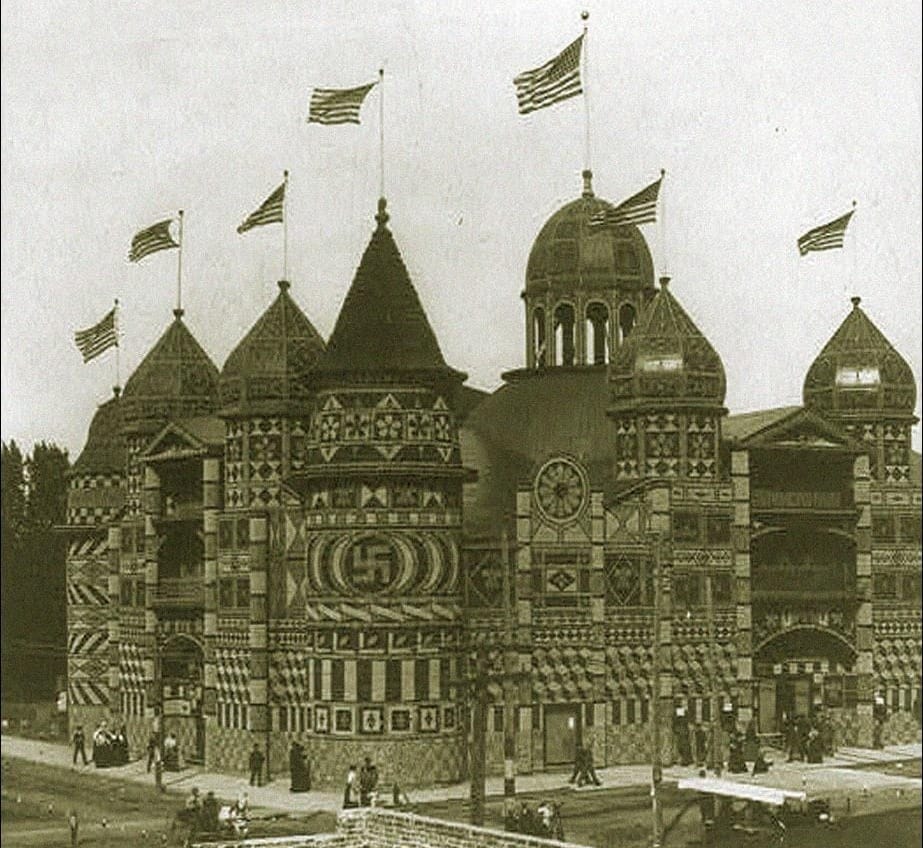Yes.

A swastika was prominently displayed on the front of Mitchell’s Corn Palace in 1907, more than a decade before Adolf Hitler and the Nazi party appropriated the symbol’s meaning.
The swastika is one of the oldest symbols to be found in early human cave and rock paintings, with an estimated origin of 6,000 years ago. The symbol is called the “Whirling Log” in Navajo culture and represents good luck, healing and balance.
The Navajo, Papago, Apache and Hopi signed a proclamation and renounced its use on blankets, artwork and clothing in 1940 after it became ubiquitous with Nazis. In the early 1900s, the symbol was used regularly in world culture.
The initial Corn Palace in Mitchell was built in 1892 and rebuilt in 1905. Interior and exterior corn murals depict agricultural scenes and other aspects of South Dakota life. The exterior murals are replaced or updated annually.
This fact brief responds to conversations such as this one.
Sources
SDPB, History of the World’s Only Corn Palace
Moab Museum, Moab History: The history of the “Whirling Log” motif
BBC, How the world loved the swastika - until Hitler stole it
Smithsonian Magazine, How the Swastika, an ancient symbol of good fortune used around the world, became the Nazi logo
South Dakota News Watch partners with Gigafact to publish fact briefs that refute or confirm a claim with supporting information and additional evidence and context.
- Read previous fact briefs.
- Read our verification standards and other best practices policies.
- Submit a question for us to answer on the South Dakota News Watch Tipline.
- Send questions or feedback to factbrief@sdnewswatch.org.
This story was produced by South Dakota News Watch, an independent, nonprofit organization. Read more stories and donate at sdnewswatch.org and sign up for an email to get stories when they're published. Contact Michael Klinski at michael.klinski@sdnewswatch.org.







